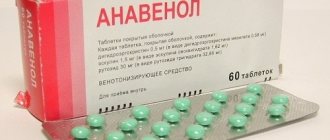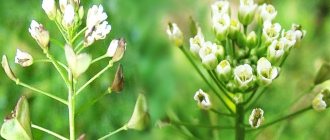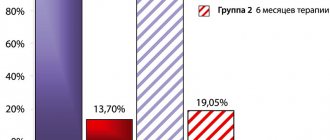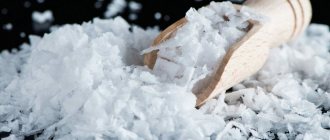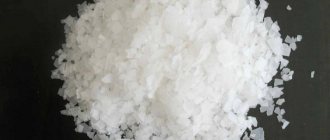Almost every modern clinic, health resort or sanatorium can offer its clients a number of physiotherapeutic procedures for heat treatment. This method of influencing the body has positively proven itself in therapy and rehabilitation medicine.
Thanks to a controlled increase in the temperature of individual areas of the body, metabolism is normalized, capillary blood flow improves, muscle function and skin elasticity are restored. The best results in the heat treatment industry continue to be demonstrated by ozokerite or mountain wax.
Application of medical ozokerite
Modern extraction of ozokerite is based on extracting the substance with gasoline, after which standard ozokerite is created from the raw material using factory methods. Natural paraffin contains minerals, trace elements, and solid hydrocarbons. It melts well at a temperature of 50-60°C, which is used for medical use of ozokerite.
Due to the fact that medical ozokerite is a good coolant and heat transmitter, it can be used without fear of getting burned. To carry out ozokerite therapy, the substance is heated in a water bath to 120°C in a special heater under a hood. Thus, it is sterilized and completely dehydrated, allowing the drug to be applied even to open wounds. The ready-made mass is used in a pre-selected way.
Application of paraffin in medicine
Paraffin applications and wraps are widely used in medicine and cosmetology. Due to its beneficial properties, paraffin is used to treat various types of diseases. For example, the procedure is used for bone fractures for rapid healing of injury, for ruptured ligaments, neuralgic disorders, chronic bronchitis and pneumonia, for adhesions after operations, for the treatment of female gynecological diseases, and for skin diseases of almost any nature.
Practicing cosmetologists and numerous beauty salons use paraffin to maintain youth and turgor of the skin of their clients, as well as to combat cellulite on the thighs, buttocks and abdomen.
The healing properties of ozokerite
The medical properties of ozokerite are due to its main mechanisms of action:
- Mechanical;
- Chemical;
- Thermally conductive.
The mechanical effect is due to the fact that when drying, natural paraffin shrinks slightly, providing a compression effect. The thermal property allows the substance to be used at high temperatures, deeply heating, but without burning. Due to thermal effects it is possible to achieve:
- Vasodilating effects;
- Painkiller;
- Spasmalytic;
- Absorbable.
And, most importantly, the chemical effect. The therapeutic procedure with ozokerite, due to the asphaltenes and resins it contains, has an estrogenic, acetylcholine-like, anti-inflammatory effect.
The drug has a special effect on the skin, restoring and regenerating the epithelium, nerve fibers and even enhancing the restoration of bone tissue. Natural paraffin can be applied to open wounds in compliance with safety regulations.
“Ozokerite treatment in Moscow is the most common procedure among all thermal methods.
»
The benefits of paraffin therapy
The main healing properties of paraffin applications include:
- Compression effect. After hardening, paraffin decreases in volume by approximately 10% - this property indicates a tightening effect; tissue lymph flow is enhanced due to compression.
- Metabolism accelerates, which promotes the rapid removal of harmful substances from the body.
- Anti-inflammatory effect. The lingering and spreading heat deep into the layers of the human body contributes to the rapid relief of painful sensations and the healing of the body, both mono and complex. Paraffin therapy is widely used for the treatment of joints, restoration of muscle tone, for fractures, acute respiratory viral infections and acute respiratory infections, and therapy of internal organs.
- Skin renewal (rejuvenation, resorption of scars and scars).
Indications for use of ozokerite
As with any other medical procedure, treatment with ozokerite has its own indications and contraindications. Indications include:
- Various diseases of the musculoskeletal system: arthritis, arthrosis, radiculitis, neuritis, osteochondrosis, myalgia...;
- Consequences of previous injuries, tenosynovitis, bursitis, myositis, osteomyelitis;
- As an acceleration of regenerative processes in fractures;
- In the presence of scar contractures;
- Formation of callus, scars;
- Skin ulcers, poorly healing wounds;
- Peptic ulcer of the stomach and duodenum in remission;
- Diseases of the liver and gall bladder;
- After suffering pleurisy;
- Initial endarteritis;
- Complications of varicose veins: trophic ulcers, thrombophlebitis;
- Inflammatory diseases of the pelvic organs;
- Male and female infertility;
- Dermatological diseases.
Contraindications
- Tuberculosis;
- Neoplasms of any localization;
- Heart diseases;
- Acute inflammatory processes;
- Pregnancy;
- Thyrotoxicosis;
- Blood diseases.
Types of paraffin applications
There are several types of procedures, each of which differs in the method of influence and complex properties.
- Cuvette-application;
- Napkin appliqué;
- Layering;
- Paraffin Bath;
- Paraffin-ozokerite;
- Cosmetology;
- Procedures for children.
The cuvette-application method is based on the use of a special container: a cuvette. Melted paraffin is poured onto the bottom of the cuvette, where the oilcloth has already been placed. The cooled but still soft material is removed from the container and placed on the target area of the patient’s body. Cover with a blanket on top.
The napkin-application method involves the use of gauze towels soaked in paraffin. This method is convenient when the area of the body being treated is large.
Layering of the paraffin mass is done using a brush and is used when small areas are treated
Paraffin baths are used to treat the hands or feet. Pre-treated feet or hands are wrapped in film with layered paraffin and lowered into baths filled with heated paraffin.
The procedure is also used in urology and gynecology.
The paraffin-ozokerite method is based on the use of natural material ozokerite. Such applications allow you to relieve inflammation and quickly restore tissue.
For cosmetic purposes, paraffin applications are used for the hands and face. Thanks to their healing properties, paraffin masks and baths smooth the skin, relieve dryness and flaking, eliminate signs of aging, remove waste and toxins, and accelerate blood flow. Paraffin wraps relieve the skin of cellulite, and also bring visible changes in the resorption of scars and scars.
Paraffin therapy for children is widely used in the treatment of acute respiratory infections and acute respiratory viral infections. Thanks to the warmth that lasts for a long time, these unique paraffin boots help to cope with frequent respiratory diseases.
Why should you come to us?
- Ozokerite is a natural paraffin-like substance, so it can be used in cases where artificial paraffin treatment cannot be used;
- Our specialists will conduct an examination of the body, identify indications and contraindications for ozokerite treatment;
- We use various methods of applying ozokerite in order to fully reveal all the healing properties of this drug in each specific case;
- We use ozokerite therapy in combination with other methods of physiotherapy, achieving high and stable results;
- Our specialists make the most effective use of all the properties of natural paraffin, creating their own ozokerite therapy regimens.
Ozokerite (paraffin therapy)
Ozokerite is a waxy mass from dark brown to black in color - a substance of petroleum origin. Ozokerite contains paraffin, mineral oils, resins and other substances. To free it from foreign inclusions, raw ozokerite is melted and washed with water, and then with acid, and bleached with special bleaching clay (Fuller's earth). Commercial ozokerite is black, green, yellow or white, depending on the degree of bleaching. Purified ozokerite melts at a higher temperature (65°C to 80°C) than paraffin; it consists almost entirely of high molecular weight hydrocarbons. Acids and alkalis have no effect on ozokerite. It holds oils and other additives firmly. Ozokerite is insoluble in volatile alcohols, but soluble in benzene, kerosene and other hydrocarbons.
The term "ozokerite" was first proposed by Glocker in 1833. The first chemical analysis of ozokerite was carried out by the famous French chemist Walter in Paris in 1840.
Clinical experience with the use of ozokerite indicates that the most favorable results are achieved when treating inflammatory and metabolic-dystrophic diseases. Ozokerite applications have a positive effect on inflammatory processes, accelerate recovery processes, increase immune parameters, normalize the tone of the autonomic nervous system, and stimulate blood circulation. The inclusion of ozokerite applications in the treatment complex increases the effectiveness of spa therapy in the treatment of pathologies of the digestive system, urination and metabolism.
The effect of ozokerite on the body consists of temperature, mechanical and chemical factors. In addition, the numerous chemical components of ozokerite and the possibility of their penetration through the skin cause significant changes in the overall reactivity of the body.
Ozokerite is characterized by very low thermal conductivity, high heat capacity and heat-retaining ability. Convection heat transfer in ozokerite is weakly expressed, therefore, when it is applied to the skin, a layer quickly forms, the temperature of which is close to the skin temperature, and the transfer of heat to the body from the overlying layers occurs very slowly. This makes it possible to use ozokerite at high temperatures (60-70 C) without fear of causing a burn.
The mechanical factor of the action of ozokerite is due to its ability, when solidified, to decrease in volume by 10-12%, which is accompanied by slight compression of the underlying tissues (compression effect). This promotes deeper distribution of heat. The compression effect of ozokerite is most pronounced during circular applications, when an area of the body is covered from all sides, for example, on the extremities, while tissue swelling is reduced, because due to the thermal effect, the outflow of tissue fluid and lymph improves.
The chemical effect of ozokerite is due to the presence of biologically active substances in it (having an estrogen-like, acetylcholine-like effect) that can penetrate through intact skin into the body and, entering the humoral channel, cause a parasympathicotonic effect. Ozokerite also contains substances with antibiotic properties. It has been established that ozokerite can have an anti-inflammatory, absorbable, analgesic, antispastic, desensitizing effect, and stimulates regeneration processes.
Indications for use of ozokerite
Diseases of the joints and spine of a dystrophic and inflammatory nature in the acute or chronic stage; consequences of damage to the musculoskeletal system; diseases and injuries of peripheral nerves and spinal cord; diseases of internal organs (chronic pneumonia, pleurisy, hepatitis, cholecystitis, gastritis, colitis, peptic ulcer of the stomach and duodenum); chronic and subacute inflammatory diseases of the female genital area, secondary infertility; chronic inflammatory diseases of the ear, nose and throat; skin diseases; diseases of peripheral vessels of the extremities in the initial stages, chronic. thrombophlebitis.
Technique of procedures
Ozokerite is heated to the required temperature in electric paraffin heaters or in a water bath. Sterilization of used ozokerite is carried out by heating in a water bath to a temperature of 100 degrees for 10-15 minutes. When reusing ozokerite, 25% of the unused substance is added to it.
There are several ways to use ozokerite:
- layering (molten ozokerite t 65-70 C is applied to the skin with a brush);
- ozokerite baths (the limb is coated with ozokerite, and then immersed in a vessel with molten ozokerite at 60-70 C;
- napkin-application (gauze folded in 8-10 layers is immersed in molten ozokerite t 50-55 C, wrung out and applied to the site of treatment, covered with oilcloth, and then with a blanket or quilted pad);
- cuvette-application (molten ozokerite in a layer 1.5-2 cm thick is poured into cuvettes, frozen ozokerite t 48-50-54 C is removed from the cuvette onto an oilcloth and applied together with it to the areas to be exposed).
The latter technique is most often used in practice.
Ozokerite is also used for abdominal treatment in the form of rectal and vaginal tampons at a temperature of 55-60 C. The choice of treatment method is determined by the form of the disease, the localization of the process, the phase and stage of the disease. Usually the procedures are carried out daily or every other day, the duration of the procedure is from 15 to 30-40 minutes, the course of treatment is 10-20 procedures. After the procedure you should rest for 30-40 minutes.
Treatment courses can be repeated at intervals of at least 3-4 months. Ozokerite can be combined (alternating procedures) with galvanization or electrophoresis, ultrasound therapy, light therapy, massage, physical therapy, and general mineral baths. The intervals between ozokerite treatment and one of the listed procedures should be at least 1-2 hours. For the elderly and children, ozokerite is heated to a lower temperature (48-52 C); The duration of the procedure is reduced to 15-20 minutes. In children's practice, preference is given to the napkin-application method (napkins are moistened with ozokerite temperature 48-49 C and a compress is applied).
The use of ozokerite is contraindicated in feverish conditions, decompensation of the cardiovascular system, acute and subacute heart diseases, severe forms, hypertension, emphysema, bronchial asthma, dystrophies, tuberculosis, benign and malignant tumors, a tendency to bleeding, blood diseases, callous and prone to to penetration of stomach and duodenal ulcers, ulcerative enterocolitis, severe liver diseases, gangrenous forms of obliterating endarteritis, acute and subacute thrombophlebitis, thyrotoxicosis, epilepsy, with suppurative processes in the pelvic organs, during pregnancy.
Storage: at a temperature not higher than + 25 C.
Procedure for treatment at home
Mountain wax is heated for 10 minutes in a steam bath to a temperature of 100 degrees, which makes it possible to sterilize the paraffin. Then you need to make bags, which should be slightly larger in size than the area of skin being treated.
Melted ozokerite is poured onto the prepared film and cooled. It can be used once the temperature reaches 50 degrees (for children it is necessary to either use colder applications or reduce the duration of the procedure). Before applying wax plates to the body, you should first apply a thin layer of Vaseline, which will prevent skin irritation and burns.
To apply several layers to the diseased area, each subsequent plate is wrapped with film or gauze. A bag of ozokerite can be wrapped around a limb and covered with oilcloth for better heating. After 40-50 minutes, the compress is removed. The procedure is repeated 10-15 times at intervals of 1 day. Mountain wax treatment almost never causes allergic reactions or side effects.
Chemical composition and properties
Unlike paraffin, ozokerite is able to maintain temperature for several hours after heating, which contributes to better heating of diseased areas of the body. This mineral is also of petroleum origin and can be in crystalline, plastic or liquid form.
In addition to the hydrocarbon base and high-molecular substances, it contains mineral oils, resins and hydrogen sulfide derivatives. For medical purposes, purified ozokerite with a pronounced kerosene odor is used. The color of this waxy mass can range from bright brown to black.
Recommendations for use and contraindications
In a complex of health spa procedures and at home, ozokerite is used to treat the following problems:
- disturbances in the functioning of the nervous system;
- inflammation of tissues and internal organs;
- diseases of the skin and blood vessels;
- trophic ulcers;
- damage to the musculoskeletal system;
- rehabilitation after surgery;
- diseases of the genitourinary system.
It is prohibited to carry out thermal treatment, as well as treatment with shock wave therapy, ultrasound and other physical procedures, in case of exacerbation of any chronic diseases, or detection of disturbances in the functioning of the heart, thyroid gland or kidneys. Also, you should not use ozokerite during pregnancy and lactation.

![Table 1. Comparison of the results of treatment with Tribestan for men with oligoasthenozoospermia [7] with mod.](https://irknotary.ru/wp-content/uploads/tablica-1-sravnenie-rezultatov-lecheniya-tribestanom-muzhchin-s-oligoastenozoospermiej-7-330x140.jpg)


